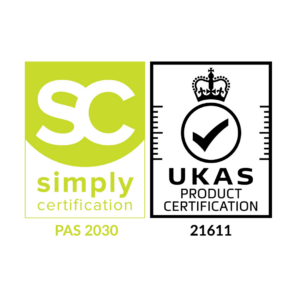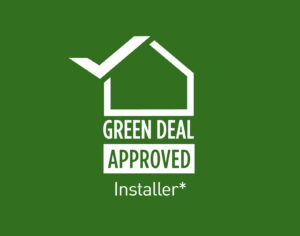Loft insulation is an essential aspect of home energy efficiency, particularly in the United Kingdom where cold weather prevails for a significant portion of the year. By insulating the loft space, homeowners can create a thermal barrier that prevents heat loss, reduces energy consumption, and enhances overall comfort.
We’ll provide a comprehensive guide to loft insulation in the UK, exploring the benefits, different types of insulation materials available, installation processes, cost considerations, potential savings, government grants and incentives, common issues and troubleshooting, and the future of loft insulation.
Whether you are a homeowner looking to improve your energy efficiency or a professional in the industry, we aim to equip you with the necessary knowledge and insights to make informed decisions about loft insulation with NXTGEN Futures.
NXTGEN Futures have an experienced, and dedicated team that specialise in retrofit and installing Loft Insulation systems under the PAS2030 regulations to ensure that all jobs meet the necessary standards.
As per the regulations NXTGEN Futures takes a fabric first approach and as such pride ourselves on our insulating works. We have in-house staff trained at level 2, 3 and 5 so far so we have a deeper understanding of retrofit.
Our Accreditations







1. Introduction to Loft Insulation
What is Loft Insulation?
Loft insulation is like a cozy blanket for your home’s roof. It involves adding a layer of material to the space between your ceiling and the roof to prevent heat from escaping. This simple yet effective solution helps keep your home warm and your energy bills in check.
The Importance of Loft Insulation
Loft insulation is one of the easiest and most cost-effective ways to improve the energy efficiency of your home. By reducing heat loss through the roof, it helps to keep your living spaces warmer and more comfortable. It also plays a crucial role in reducing your carbon footprint and combating climate change. Plus, with energy costs on the rise, loft insulation can save you some serious cash in the long run.
2. Benefits of Loft Insulation
Energy Efficiency and Reduced Carbon Footprint
Installing loft insulation is like putting a sweater on your home. It helps to trap heat inside, so you can turn down the thermostat without sacrificing comfort. By reducing the amount of energy needed to heat your home, you’ll not only save money but also reduce your carbon footprint. It’s a win-win for both your wallet and the planet.
Enhanced Comfort and Improved Indoor Air Quality
No one likes a drafty house. Loft insulation helps to seal up any gaps or cracks in your roof, making your home more cozy and comfortable. It also creates a barrier against moisture, preventing dampness and mold from taking hold. In addition to keeping you snug, loft insulation improves indoor air quality by minimizing the infiltration of dust, pollen, and outdoor pollutants.
Noise Reduction and Soundproofing
If you live in a bustling area or near noisy neighbors, loft insulation can be a lifesaver. It acts as a barrier to sound, helping to reduce the amount of external noise that enters your home. So, whether it’s the sound of traffic or your neighbor’s karaoke sessions, loft insulation can provide some much-needed peace and quiet.
3. Types of Loft Insulation Materials
Mineral Wool Insulation
This type of insulation is made from mineral fibers like glass or rock wool. It’s a popular and affordable choice for loft insulation due to its excellent thermal and acoustic properties. Mineral wool insulation is easy to install and offers good resistance to fire.
Spray Foam Insulation
Spray foam insulation is a more modern alternative that involves spraying a liquid foam material into the loft space. It expands and hardens, creating a seamless and highly effective insulation layer. Spray foam insulation is ideal for hard-to-reach areas and provides superior thermal performance.
Cellulose Insulation
Made from recycled paper or cardboard fibers, cellulose insulation is an eco-friendly option for loft insulation. It’s treated with fire retardants and can be blown into the loft space using special equipment. Cellulose insulation offers excellent thermal insulation and soundproofing properties.
4. Understanding the Installation Process
Assessment and Preparation
Before installing loft insulation, it’s essential to assess the condition of your loft and identify any potential issues like dampness or ventilation problems. Clearing the loft space of any clutter and ensuring adequate ventilation are essential steps in the preparation process.
Installation Techniques
The installation technique for loft insulation depends on the chosen material. For mineral wool insulation, rolls or batts are laid between the joists, while spray foam insulation is applied directly onto the roof deck. Cellulose insulation is typically blown into the loft space using a special machine. It’s advisable to hire a professional for the installation to ensure proper coverage and effectiveness.
Health and Safety Considerations
While loft insulation is generally safe, it’s important to take necessary precautions during installation. Wear protective clothing, gloves, and a mask when handling insulation materials. Make sure to follow the manufacturer’s instructions and seek professional advice if you’re unsure about any aspect of the installation process. Safety first, folks!
Now that you’re armed with the knowledge of loft insulation, it’s time to cozy up your home and reap the benefits. Stay warm, save money, and enjoy a more comfortable and environmentally friendly living space. Happy insulating!
5. Cost Considerations and Potential Savings
When it comes to loft insulation, one of the first things on anyone’s mind is the cost. But fear not, fellow penny pinchers, for the initial investment is often outweighed by the long-term savings.
Initial Investment and Payback Period
So, how much are we talking? Well, the cost of loft insulation in the UK can vary depending on factors such as the size of your loft and the type of insulation you choose. On average, however, you can expect to shell out a few hundred pounds.
But don’t let that scare you away! The good news is that loft insulation pays for itself in the long run. With the money you save on heating bills, you’ll be counting crisp pound notes like a magician pulling rabbits out of a hat. In fact, many homeowners find that they recoup their initial investment within just a few years.
Potential Energy Savings and Reduced Heating Bills
Speaking of saving money, let’s talk about the cold, hard cash you’ll be keeping in your pocket thanks to loft insulation. By reducing heat loss through your roof, insulation can help you slash those astronomical heating bills.
You see, without proper insulation, your precious heat can escape through the roof faster than a cat chasing a laser pointer. But with loft insulation, you’ll be sealing in that warmth, ensuring your home stays cozy like a marshmallow in a cup of hot chocolate.
Studies have shown that homeowners can save up to £250 per year on their heating bills by properly insulating their lofts. That’s money you can spend on more important things, like fancy coffee or an epic Netflix subscription.
Long-term Financial Benefits
But the benefits of loft insulation don’t stop at reduced heating bills. Oh no, my frugal friend, there’s more money-saving magic to be had.
Proper insulation can increase the value of your home, making it more attractive to potential buyers when the time comes to sell. So not only will you be sitting pretty with lower energy bills, but you’ll also have a shiny asset that’s worth more in the long run. It’s like finding a pot of gold at the end of a rainbow, but without the leprechaun shenanigans.
6. Government Grants and Incentives
Now, if all this talk of cost savings and financial benefits hasn’t convinced you yet, perhaps the government can sweeten the deal even further. That’s right, they’re throwing money at you. Well, not literally. But close enough.
Available Grants and Funding Programs
The UK government is all about promoting energy efficiency and reducing carbon emissions. So, to encourage homeowners to get on the loft insulation train, they offer a range of grants and funding programs to help with the cost.
There are different schemes available in different parts of the UK, so it’s worth doing a bit of research to find out what’s on offer in your area. From the Green Homes Grant to the Energy Company Obligation, there are plenty of opportunities to get some financial assistance and make your wallet do a happy dance.
Eligibility Criteria and Application Process
Now, before you start imagining yourself swimming in a pool filled with government cash, it’s important to know if you’re eligible for these grants and incentives. Generally, the criteria revolve around factors such as income, property type, and energy efficiency status.
The application process is usually straightforward, but it’s always a good idea to double-check the requirements and gather any necessary documents. After all, you don’t want to miss out on a pile of free money just because you forgot to sign a dotted line.
Benefits of Taking Advantage of Government Support
By taking advantage of government grants and incentives, you can make loft insulation an even more cost-effective endeavor. Not only will you be saving money on your energy bills, but you’ll also have Uncle Sam (or rather, Uncle Boris) cheering you on and putting pounds back in your pocket.
7. Common Issues and Troubleshooting
Now, let’s address some common issues and troubleshoot any concerns you might have about loft insulation.
Damp and Condensation Problems
One potential issue with loft insulation is the dreaded damp and condensation. Nobody likes a soggy attic, so it’s important to take precautions to prevent moisture build-up.
Proper ventilation is key to combatting dampness. Make sure your loft has adequate air circulation to allow any trapped moisture to escape into the great outdoors. You can also consider using moisture-resistant insulation materials to keep things dry as a bone.
Insufficient Insulation and Heat Loss
If you’re still feeling a chill despite having loft insulation, it could be a sign of inadequate coverage. Insulation should be thick enough to keep the warmth in and the cold out. Check for any gaps or thin areas and top up the insulation as needed.
Remember, when it comes to insulation, more is better. Think of it like wrapping yourself in a cozy blanket on a winter’s day—except in this case, the blanket is made of fluffy insulation and doesn’t make you look like a walking burrito.
Maintenance and Upkeep Tips
Once you’ve got your loft insulation sorted, it’s important to keep an eye on it and perform some basic maintenance. Insulation can settle over time, so it’s a good idea to check for any signs of compression or wear and tear.
You should also keep an eye out for any unwanted guests making a cozy home in your loft. We’re talking about pests, not your in-laws. Ensure that any holes or entry points are sealed up tight to prevent unwanted visitors from enjoying your insulation as much as you do.
8. The Future of Loft Insulation in the UK
Loft insulation is not just a fad. It’s a trend that’s here to stay, and it’s only going to become more important in the future. Here’s why:
Technological Advancements and Innovations
Like most things in life, insulation technology is evolving. Scientists and engineers are constantly developing new and improved materials and techniques to make our homes more energy-efficient.
From advanced insulation materials to smart home technologies, the future of loft insulation promises to be even more effective and efficient. Just imagine a world where your loft insulation can communicate with your thermostat and adjust the temperature based on your preferences. It’s like living in a sci-fi movie, except without the aliens and laser guns.
Government Policies and Environmental Targets
The UK government has set ambitious targets to reduce carbon emissions and combat climate change. As part of these efforts, improving home energy efficiency is a top priority. Loft insulation plays a significant role in achieving these goals, so you can expect continued support and incentives to make it happen.
By investing in loft insulation, you’re not just keeping your home warm and your wallet happy—you’re also doing your part in creating a greener and more sustainable future for all.
Consumer Awareness and Demand
As more and more people become aware of the benefits of loft insulation, the demand for these services continues to grow. Homebuyers and renters are increasingly seeking energy-efficient properties,In conclusion, loft insulation is an effective and practical solution for improving energy efficiency in UK homes. With its numerous benefits, such as reduced heating bills, enhanced comfort, and positive environmental impact, loft insulation is a worthwhile investment. By understanding the various types of insulation materials, the installation process, and cost considerations, homeowners can make informed decisions about implementing loft insulation in their properties. Moreover, government grants and incentives further encourage the adoption of loft insulation. As the industry continues to evolve with advancements in technology and increasing environmental consciousness, loft insulation is set to play a vital role in creating sustainable and energy-efficient homes in the future.
Loft Insulation FAQ
1. How much can I save on my energy bills by installing loft insulation?
Installing loft insulation can lead to significant savings on energy bills. On average, homeowners can save up to £150-£250 per year by effectively insulating their lofts, depending on factors such as the size of the property, insulation material used, and current energy consumption.
2. Are there any government grants available for loft insulation in the UK?
Yes, the UK government offers various grants and funding programs to encourage the installation of loft insulation. These grants can significantly reduce the cost of insulation and may even cover the entire expense. Eligibility criteria and application processes may vary, so it’s recommended to research available grants and incentives specific to your location.
3. How long does loft insulation typically last?
Loft insulation is designed to have a long lifespan, typically ranging from 40 to 50 years. However, the longevity may vary depending on factors such as maintenance, insulation material used, and any external factors that may impact the insulation’s integrity. Regular inspections and necessary maintenance can help ensure that the insulation remains effective for an extended period.
4. Can I install loft insulation myself, or do I need to hire a professional?
While loft insulation can be a DIY project for some homeowners, it is recommended to hire a professional installer, particularly if you are not familiar with the process. Professional installers have the expertise to assess your property, recommend the most suitable insulation materials, and ensure proper installation, maximizing the insulation’s effectiveness and avoiding any potential issues.
